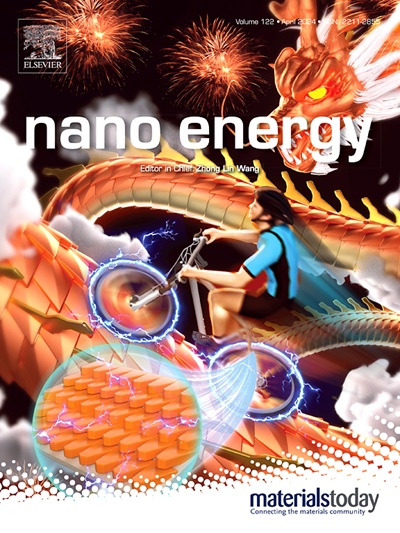Mitigating public hygiene anxiety in waste material applications: Development of an antibacterial and high performance triboelectric nanogenerator from recycled PET
IF 16.8
1区 材料科学
Q1 CHEMISTRY, PHYSICAL
引用次数: 0
Abstract
The development of triboelectric nanogenerators using waste materials (WM-TENGs) has gained significant attention for advancing a low-carbon economy and enhancing renewable energy utilization. However, consumer concerns about hygiene and safety hinder their acceptance in human-related applications, particularly due to fears of residual bacteria on reused materials from previous users and the potential for new bacterial growth from new users. To address these concerns, we developed an antibacterial and high-performance triboelectric nanogenerator from waste PET materials (AW-TENG). By incorporating small antibacterial polyhexamethylene guanidine hydrochloride (PHMG) molecules into the PET molecular chains, the resultant material, PET-PHMG, not only retains the excellent antibacterial properties of PHMG but also exhibits significantly enhanced triboelectric properties. The PET-PHMG nanofiber based AW-TENG achieved a maximum output voltage and current of 120.2 V and 2.9 μA, while demonstrating effective antibacterial activity against S. aureus and E. coli. The corresponding charge density of 22.1 nC/cm² stands out as one of the highest among WM-TENGs. Given these attractive characteristics, the AW-TENG is well-suited for applications such as self-powered pressure sensors and fire alarm systems. This study highlights the advanced utilization of discarded PET-derived antibacterial material in TENG technology, which can effectively foster public confidence in the use of wasted materials.

求助全文
约1分钟内获得全文
求助全文
来源期刊

Nano Energy
CHEMISTRY, PHYSICAL-NANOSCIENCE & NANOTECHNOLOGY
CiteScore
30.30
自引率
7.40%
发文量
1207
审稿时长
23 days
期刊介绍:
Nano Energy is a multidisciplinary, rapid-publication forum of original peer-reviewed contributions on the science and engineering of nanomaterials and nanodevices used in all forms of energy harvesting, conversion, storage, utilization and policy. Through its mixture of articles, reviews, communications, research news, and information on key developments, Nano Energy provides a comprehensive coverage of this exciting and dynamic field which joins nanoscience and nanotechnology with energy science. The journal is relevant to all those who are interested in nanomaterials solutions to the energy problem.
Nano Energy publishes original experimental and theoretical research on all aspects of energy-related research which utilizes nanomaterials and nanotechnology. Manuscripts of four types are considered: review articles which inform readers of the latest research and advances in energy science; rapid communications which feature exciting research breakthroughs in the field; full-length articles which report comprehensive research developments; and news and opinions which comment on topical issues or express views on the developments in related fields.
 求助内容:
求助内容: 应助结果提醒方式:
应助结果提醒方式:


